AEQ® SPORTS
Athletes must understand and feel their body on a whole other level than average people do if they wish to progress successfully, constantly, and without injuries. The AEQ method offers a new way of advancing in sports: exponential growth through an improved translation of information from the head to the muscles and feeling and awareness of your body.
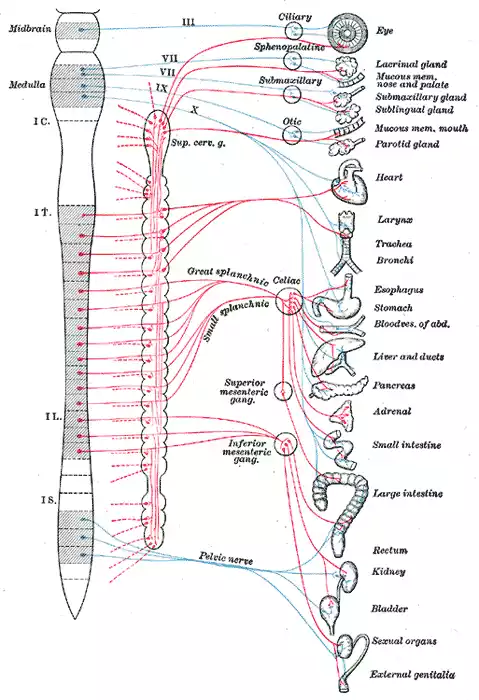
Red = sympathetic nerve paths
Vir: Wikipedija
How can the AEQ method help in sports?
The AEQ method offers ways and exercises that help improve the activation of the parasympathetic functioning of the autonomic nervous system. This can help the athlete improve their regeneration, as well as helping them use their available energy more efficiently.
The fact is that due to the reduced ability to focus, the younger generations find it increasingly difficult to progress and remain uninjured, as training nowadays is too forceful.
Why should an athlete pursue the AEQ method?
- If they miss devoting themselves to movement intelligence, they would properly train it for a natural increase in strength and speed without unwanted consequences.
- If they wish to understand the importance of emotional stability and intelligence.
- If they excessively rely on achievement tables and measurements, while rarely asking themselves how they and their bodies feel.
If you believe that progress in the above would make it easier for you and improve your athletic achievements, I invite you to explore all the possibilities of the AEQ® method, which I’ve been developing for years.
The AEQ method and its connection to sports
I use the AEQ method to more successfully and correctly guide athletes. I work with recreational and professional athletes of all generations. The foundation is a thinking model adjusted to the sport, which I’ve developed during my work with athletes, first to help them heal their injuries, and later for an easier and more reliable achievement of desired results.
The AEQ method helps a person relearn their primal, natural movement, which improved self-awareness and increases its efficiency, making it the most important factor in the success of an athlete. A person suffering from chronic, acute muscle pain or movement disorders and asymmetries will learn to observe, change, and control the body’s neuromuscular systems. I myself have supplemented, updated, and improved the findings of clinical-somatic methods.
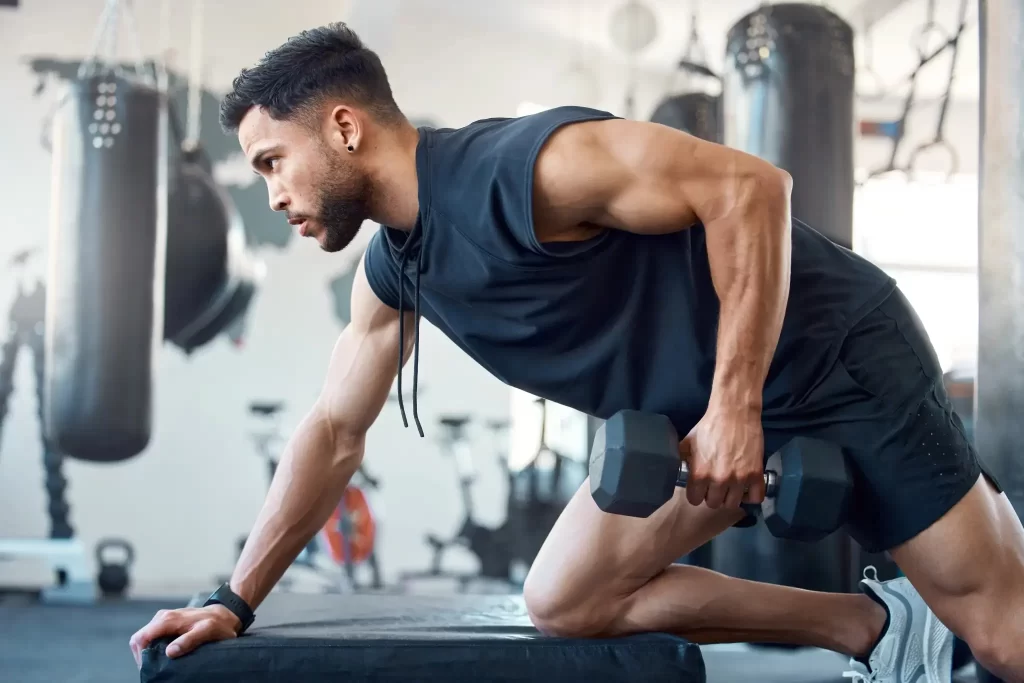
The benefits of using the AEQ method in sports
Education of this kind enters an area not satisfyingly covered by science and healthcare. Relieving and eliminating pain, relaxing, and improving the nervous system’s muscular functions and functions are key to a healthy life. They help with undisturbed movement. The AEQ method reaches the roots of most chronic muscle pain, which can only be relieved by altering a sensory-motor loop. This can only be achieved without inappropriate side effects through understanding that will change the brain’s workings. Not only do these send impulses, but they can also reprogram, with the help of the AEQ method, which is important if we wish to heal malfunctions and the inefficient operation of the neuromuscular and skeletal system. This is the path to optimizing muscle tone, intermuscular coordination, energy systems, and the synchronized operation of all parts of the system we call soma; a man is not a machine, but a body guided by reason.
How can an athlete’s childhood influence their success?
Most athletes develop a strong separation from their bodily sensations and awareness during their childhood, which allows them to feel less pain. This helps them be better, faster and more competitive from their peers, and can progress quickly at the beginning of their careers. However, this progress only takes place up to a certain stage due to their suppressed perception of their own sensations. This, in turn, increasingly limits them; they become sick more often, are more susceptible to injuries, and fall into various stages of burnout and fatigue. This is all due to a lacking development of emotional intelligence.
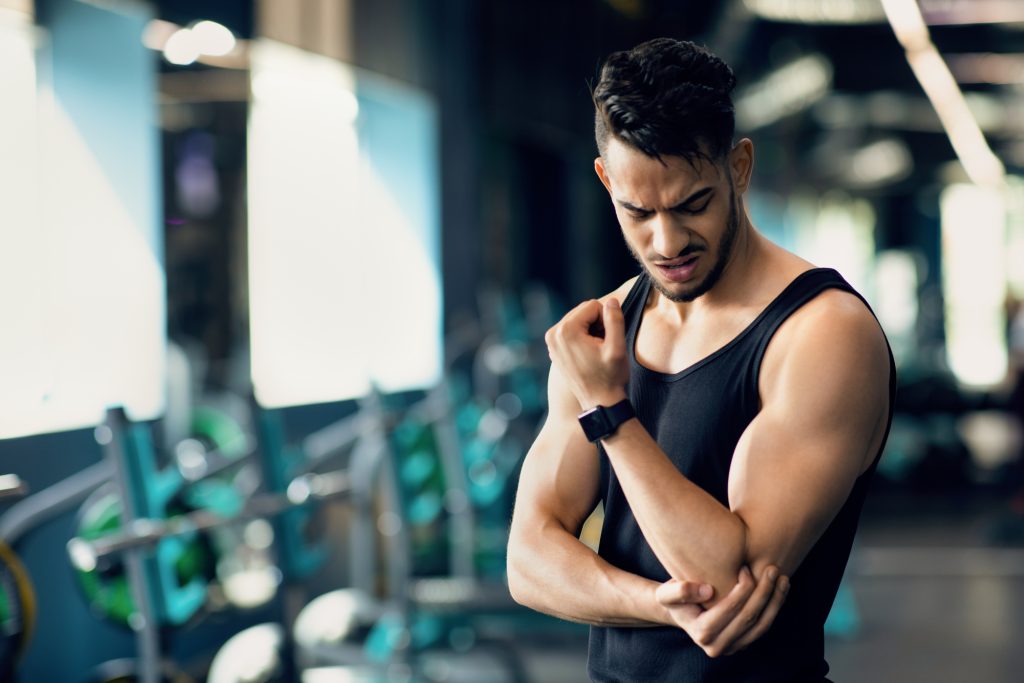
Experience and results
Due to the ever-increasing problems with injuries among younger and younger athletes, I believe in the success of including the AEQ approach in their training program. With its help, you’ll be able to prolong your active athletic life and increase your passion for sports.
So far, I’ve successfully worked with over 50 top athletes from different sports categories, mostly athletics, skiing, and cycling. I’m noticing the ever-increasing problems athletes and professional sports teams face in achieving and maintaining top results. Injuries have become an unavoidable part of an athlete’s career. However, the AEQ method’s purpose is to prevent and cure injuries and pain. A part of the AEQ method is also AEQ breathing, which greatly improves the breathing efficiency of an athlete and helps them reach a greater level of relaxation in their muscles and, with it, faster and more thorough regeneration and rehabilitation with a better exchange of gasses in said muscles.
Athletes breathing incorrectly goes hand in hand with having a wrong understanding of the importance of training and increases the frequency of injury and their severity. In contrast, systematically training breathing enables its long-term improvement and successfully eliminates problems that aren’t solved by other breathing methods.
The acquired knowledge
and skills enable the
athlete to:
- To sense asymmetrical movement and understanding the causes for it.
- A clear perception of the body's areas with too high tone and a poor ability to relax them
- Clear perception and understanding of the negative effects of movement inefficiency caused by the agonists and antagonists operating uncoordinated.
- Clear perception and understanding of the athlete's state of the autonomic nervous system and enabling higher activation of the parasympathetic state for the regeneration and rehabilitation needs.
- Improving the accuracy of the sensory-motor loop's operation.
- Increasing the ability to focus and harmonize the consciousness and body and increase the athlete's ability to enter the natural course of progress
- To sense and eliminate areas of poor control over movement, where movement can be tested and improved without the dangers of injuries or loss of motivation.
- Increasing the accuracy of determining the time and type of exercise and training and better understanding the pain's role and purpose.
- Better determination of types, frequency and intensity of body overloads.
- Improving the results, regeneration, and focus while lowering the number of injuries.
- Understanding how stress and trauma affect us and how to limit and reduce their effects - improved somatic awareness, proprioception, movement, and breathing.
- To recognize the poor relationships from the environment and eliminate physical and mental blockages created in childhood limit our efforts.
The acquired knowledge and skills enable the athlete to:
- To sense asymmetrical movement and understanding the causes for it.
- A clear perception of the body's areas with too high tone and a poor ability to relax them
- Clear perception and understanding of the negative effects of movement inefficiency caused by the agonists and antagonists operating uncoordinated.
- Clear perception and understanding of the athlete's state of the autonomic nervous system and enabling higher activation of the parasympathetic state for the regeneration and rehabilitation needs.
- Improving the accuracy of the sensory-motor loop's operation.
- Increasing the ability to focus and harmonize the consciousness and body and increase the athlete's ability to enter the natural course of progress
- To sense and eliminate areas of poor control over movement, where movement can be tested and improved without the dangers of injuries or loss of motivation.
- Increasing the accuracy of determining the time and type of exercise and training and better understanding the pain's role and purpose.
- Better determination of types, frequency and intensity of body overloads.
- Improving the results, regeneration, and focus while lowering the number of injuries.
- Understanding how stress and trauma affect us and how to limit and reduce their effects - improved somatic awareness, proprioception, movement, and breathing.
- To recognize the poor relationships from the environment and eliminate physical and mental blockages created in childhood limit our efforts.
Read more about the AEQ method and sports

The Use and Abuse of Recreation and Sports
If we find ourselves in a situation where we feel threatened or where something disturbs, limits, or obstructs us, the sympathetic state of the autonomic nervous system is activated. Its role is to shift the body into a fight-or-flight…
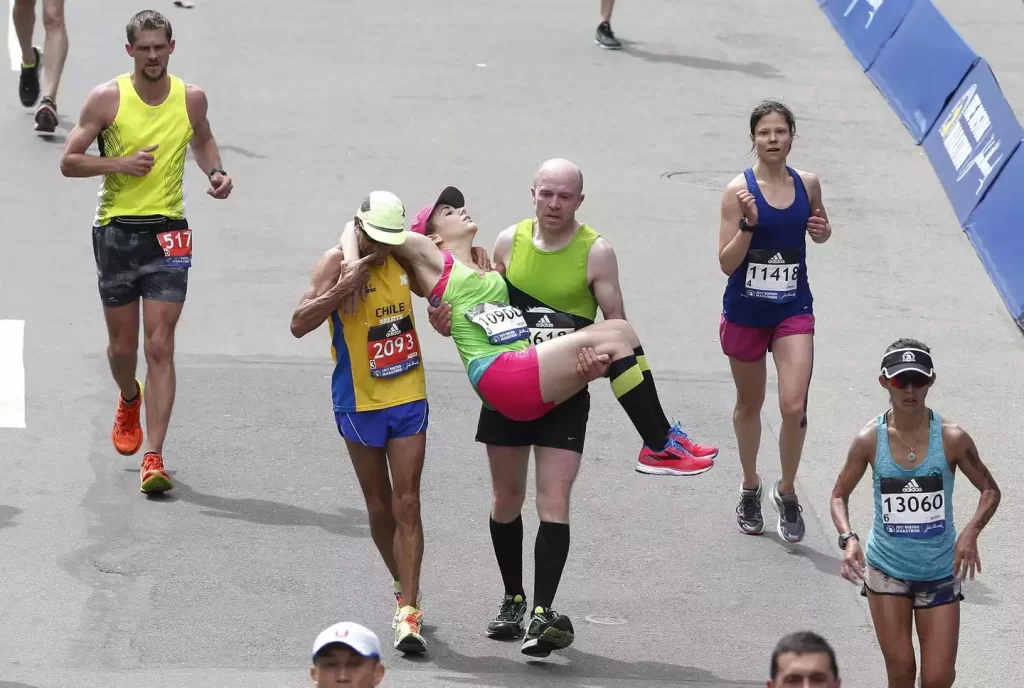
THE CONSEQUENCES OF A POOR CONNECTION BETWEEN BODY AND MIND
If an athlete is not educated on the principles and mechanisms of the problems he is facing, training is mostly an inefficient use of energy and time because he will react as before under the same circumstances and cause…

Understanding the body after an injury
Injury is usually the result of an overload that is severe and prolonged enough to lead to burnout and termination of the overload. Injury, especially if it is repeated, offers us an answer to what, despite a strong…
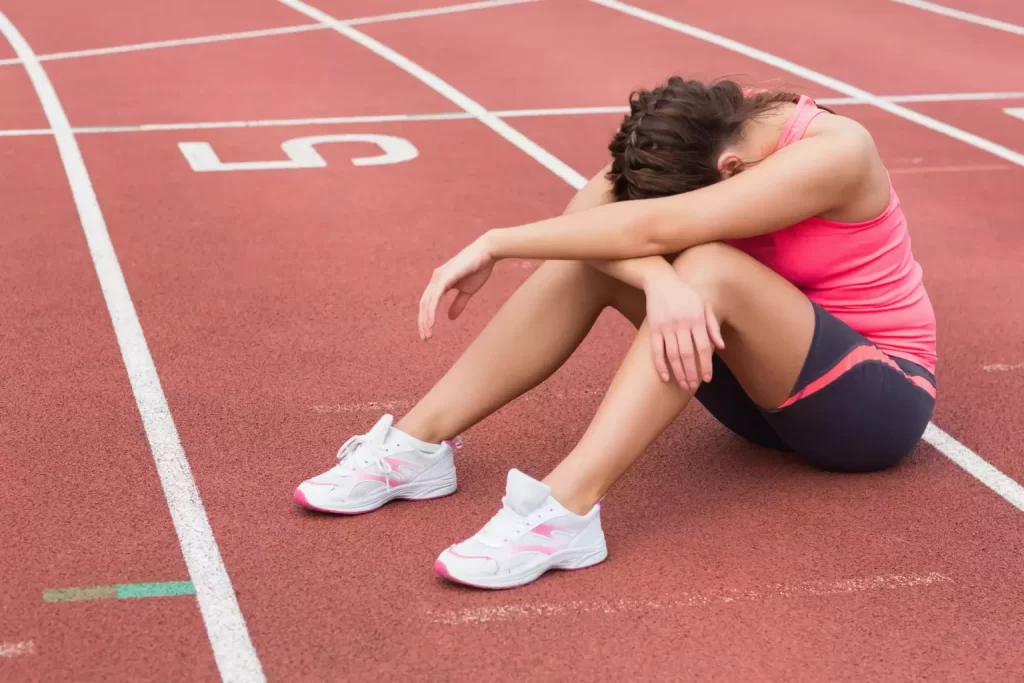
THE MAGIC SPIRAL OF INCREASINGLY DIFFICULT EXERCISES
Many athletes, especially recreational ones, get caught in a spiral of increasing the difficulty of training, even though they feel inside that this does not bring them the expected progress and often leads them away…

MORE EFFORT AND LESS EMOTION ISN’T BETTER
A common cause for joint problems that athletes have, are sensory-motor amnesia (SMA) and an increased muscle tone that distorts correct and fluid pelvis and torso movement. From the day of our birth onwards…

HOW TO FIND THE MENTAL STRENGTH NEEDED TO RUN
When looking for a reason for lack of motivation to run, it is necessary to understand the role of the invested-received relationship, which is implanted deep within our limbic system. The relationship between what…

HEALING INJURIES AND PREVENTING NEW ONES
In the treatment and reduction of the probability of recurrence of injury in the AEQ method, the rule is that the movement must first be normalized, then optimized, and finally improved. The injury alone…
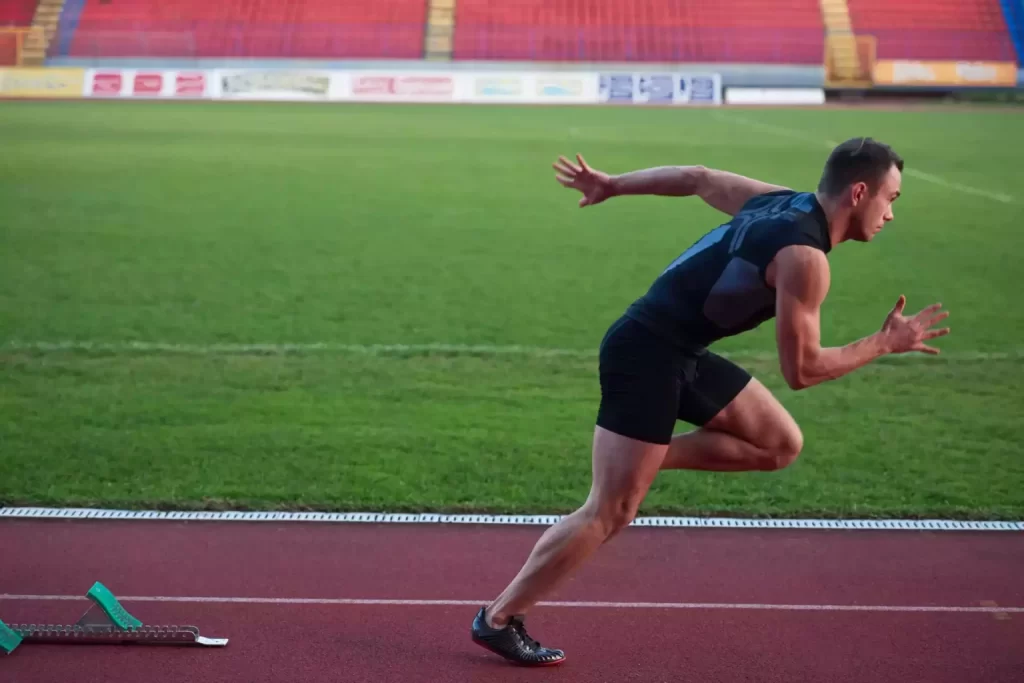
RUNNING AND MINDFULNESS OF THE MIND OVER THE BODY
Consciousness is usually directed to reaching a certain goal no matter the cost, rather than going faster toward the goal using conscious learning, better feeling, and consciously improved movement….
